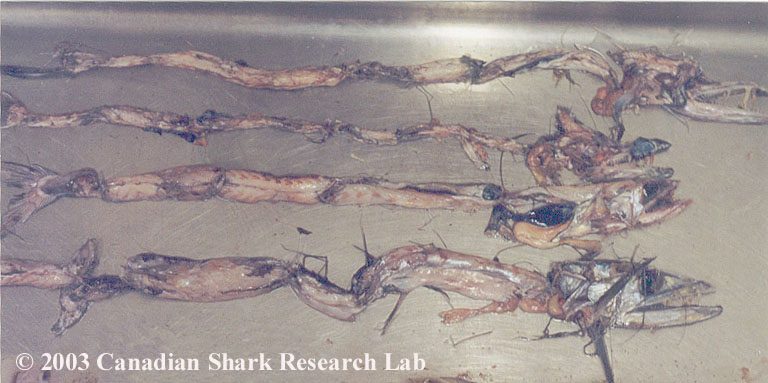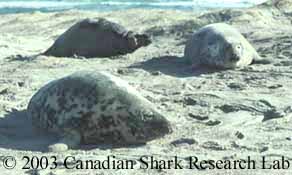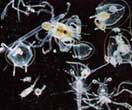Feeding Habits
The feeding habits of sharks are varied and are based on the four main diet types: fish, mammals, crustaceans and plankton. The diet of a shark determines many aspects of its life including where it lives, the time of day that it is active, the depths at which it can be found, and the type of teeth and jaw that it possesses.
Sharks that eat fish are usually pelagic, ranging throughout the water column. Examples in Canadian waters include porbeagle, mako and blue sharks. Their teeth tend to be narrow and sharp in order to grasp their prey while swimming. This picture shows the stomach contents of a fish-eating porbeagle shark. Visible in the photo are the partially digested remains of lancetfish, squid and haddock.
Sharks like the great white feed mainly upon marine mammals like seals or sea lions. Although their diets are not exclusive to mammals they possess teeth that are specialized for handling large animals like cetaceans. The teeth are serrated and allow them to remove large pieces of flesh.
Bottom dwelling species of shark like the deepsea cat shark eat crabs and other crustaceans with a hard outer shell. Sharks that eat crustaceans have short grinding teeth that are used to crush their food. Relatively few of the shark species in Canada are this type of feeder.
Sharks that eat plankton have specialized feeding mechanisms. The basking shark eats plankton by swimming at the surface with its mouth open. The water rushes through the mouth and out the gills. Gill rakers at the entrance to the gill catch and filter out all of the plankton (small organisms that float in the water).
Gill rakers, like the ones seen in this picture, are numerous in the basking shark, but are shed in the winter when the food supply of plankton is scarce.
Plankton, are the microscopic organisms that float in the water. They are often clear or translucent like the ones seen in this photo. It takes large amounts of these small organisms to support a shark as large as a basking shark.



